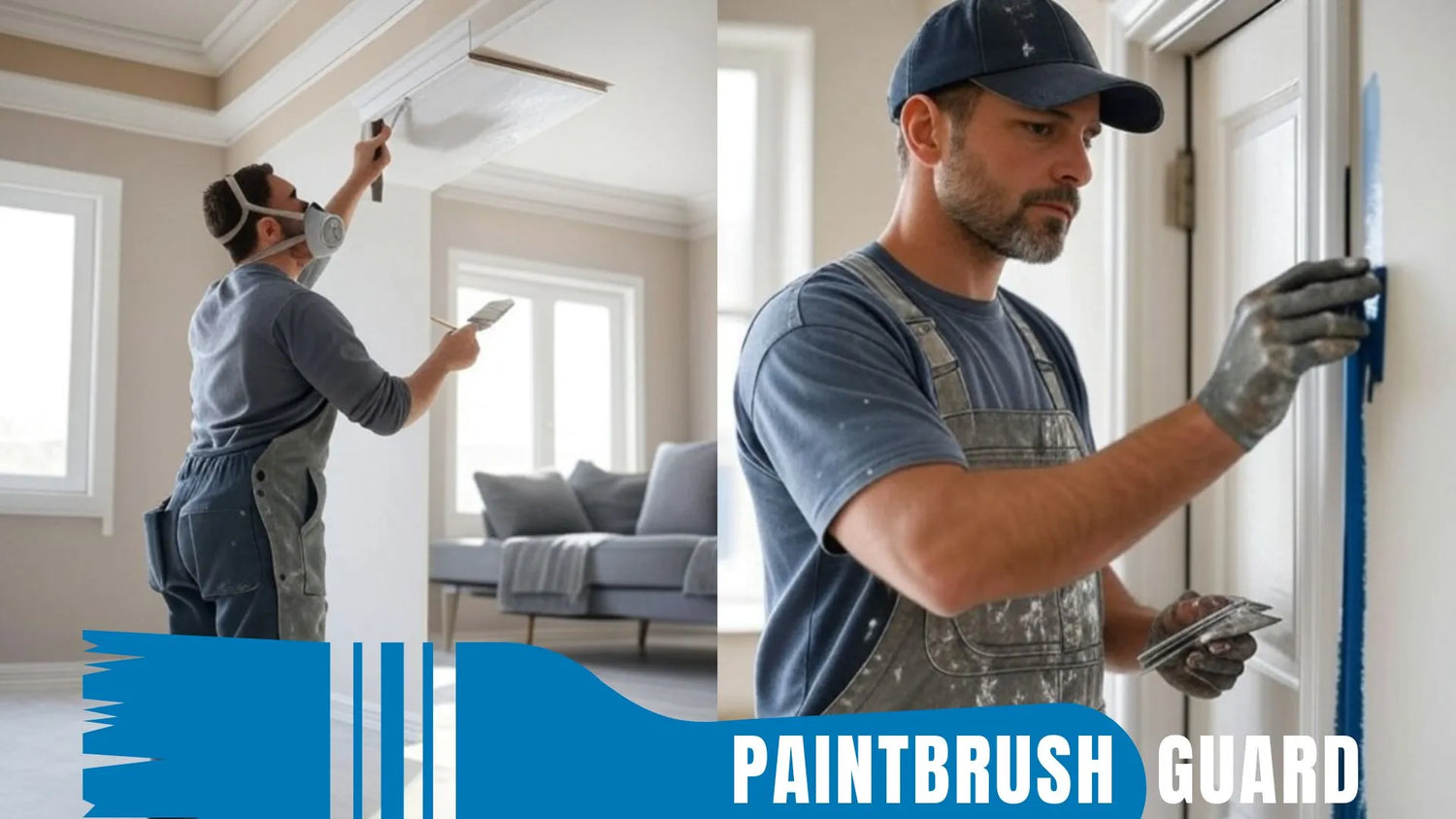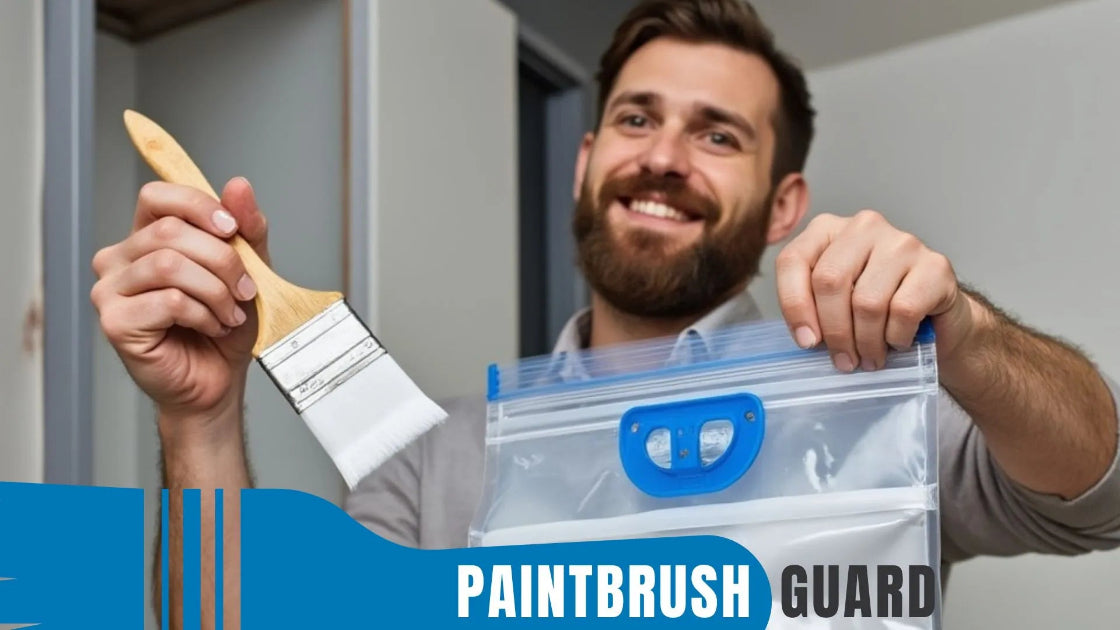
How To Keep My Paintbrush from Hardening with vacuum
|
Time to read 4 min
|
Time to read 4 min
To keep your paintbrush from hardening, your best option is to use vacuum for storage of paintbrushes during breaks.
Pause mid-project or wrap up for the day, your brush stays fresh without the rush to clean. In the same time, you don't need to use chemicals that pollutes the environment.
This guide tackles the top 20 questions about storing paintbrushes, from quick breaks to long-term care, and even challenges like humid coastal areas.
The Paintbrush Guard offers a revolutionary way to prevent your paintbrush from hardening without cleaning.
This tool vacuum-seals your paintbrush, locking in moisture and keeping the bristles wet and ready for use, even days later.
After painting, simply place the brush in the guard, seal it, and store it—no rinsing required.
This can save 15–30 minutes per session, as you can resume painting without worrying about dried paint stiffening the bristles.
It’s especially handy for multi-day projects, ensuring your brush stays in perfect condition without the hassle of traditional cleaning methods.
Learn more about the benefits of Paintbrush Guard vacuum storage. Save time, reduce water waste, prevent chemical pollution and cut costs on supplies for house painting projects.
If you’re taking a short break, like overnight, and don’t have a Paintbrush Guard, you can still keep your brush from hardening.
Wrap the bristles in a damp cloth or plastic wrap to retain moisture, then place it in a sealed plastic bag.
This method keeps the paint wet, preventing it from drying and stiffening the bristles.
Be sure to check the brush within 24–48 hours, as prolonged exposure to moisture without sealing can sometimes lead to mold.
While this works, vacuum is a more reliable option, as it creates an airtight seal that preserves the brush for longer periods without any risk.
For long-term storage after you’ve finished painting, ensure your brush stays soft by cleaning it if needed or using the Paintbrush Guard to maintain its condition.
If you opt to clean, rinse water-based paints with warm water and mild soap, or use mineral spirits for oil-based paints, then dry thoroughly.
Once ready, wrap the bristles in their original packaging or a piece of cardboard to hold their shape.
Store the brush flat in a cool, dry place, away from heat that can dry out the bristles.
A dedicated brush holder or drawer prevents damage, ensuring your brush remains soft and ready for your next project.
With no cleanup required after a painting session, you can take a short break mid-project or wrap up your painting for the day, your brush stays ready without the need to clean.
To keep bristles soft over time, consider using a brush conditioner, available at hardware stores for $5–$15.
These products, often containing lanolin, are applied to the bristles after use to maintain flexibility. Work a small amount into the bristles, let it sit briefly, then wipe off excess and store as usual.
This is particularly useful for natural-bristle brushes, which can dry out more easily.
A 2023 report by the Paint Quality Institute found that conditioned brushes last up to 25% longer, making this a smart step for painters who want to extend the life of their tools, even when using the Paintbrush Guard.
If your brush begins to harden because you missed a cleaning session, you might still save it, though the Paintbrush Guard prevents this issue entirely.
For water-based paint, soak the brush in warm, soapy water for a few hours, then gently comb out the dried paint with a brush comb.
For oil-based paint, soak in paint thinner or a cleaner like Krud Kutter for 12–24 hours, then scrub with a wire brush.
If the bristles are too stiff to restore, replace the brush, using a hardened one can ruin your paint job with streaks.
Vacuum storage, like with the Paintbrush Guard, creates an airtight seal to keep bristles wet during a porch railing project, preventing paint from drying. This eliminates the need for rinsing, maintains brush flexibility, and reduces environmental waste, ensuring a ready-to-use brush for seamless painting.
Wrapping bristles in a damp cloth and sealing them in a plastic bag for an accent wall project keeps paint wet for 24–48 hours. This prevents hardening without chemicals, maintaining brush condition and supporting eco-friendly practices for short-term storage needs.
The Paintbrush Guard vacuum-seals brushes, keeping them fresh for days during a fence repaint, saving 15 minutes per break by skipping cleanup. This preserves bristle quality, reduces water and solvent use, and ensures an efficient, sustainable routine for consistent painting results.
Applying a lanolin-based conditioner after cleaning for a cabinet refinishing job keeps bristles flexible, preventing drying and fraying. This extends brush lifespan, reduces replacements, and maintains performance, supporting cost-effective and eco-conscious painting practices for future projects.
For a water-based paintbrush used on a deck, soaking in warm, soapy water for a few hours and gently combing out dried paint can restore flexibility. This avoids harsh solvents, minimizes environmental impact, and salvages the brush for continued use in small projects.

Learn about eco-friendly painting, tips and tutorials on house interior and exterior surfaces, so you can get started with your project without any surprices during or after your painting.

Learn how interior house paint colors influence mood with expert tips on room preference so you can pick the best colors for a harmonious home environment.
We focus on the most popular shades for each interior colors, so you don't miss no matter what color you pick.

Learn how this innovative tool allows you to store paintbrushes without the need for immediate cleaning, offering significant advantages in time savings, water conservation, reduced chemical pollution, and lower costs for supplies.
